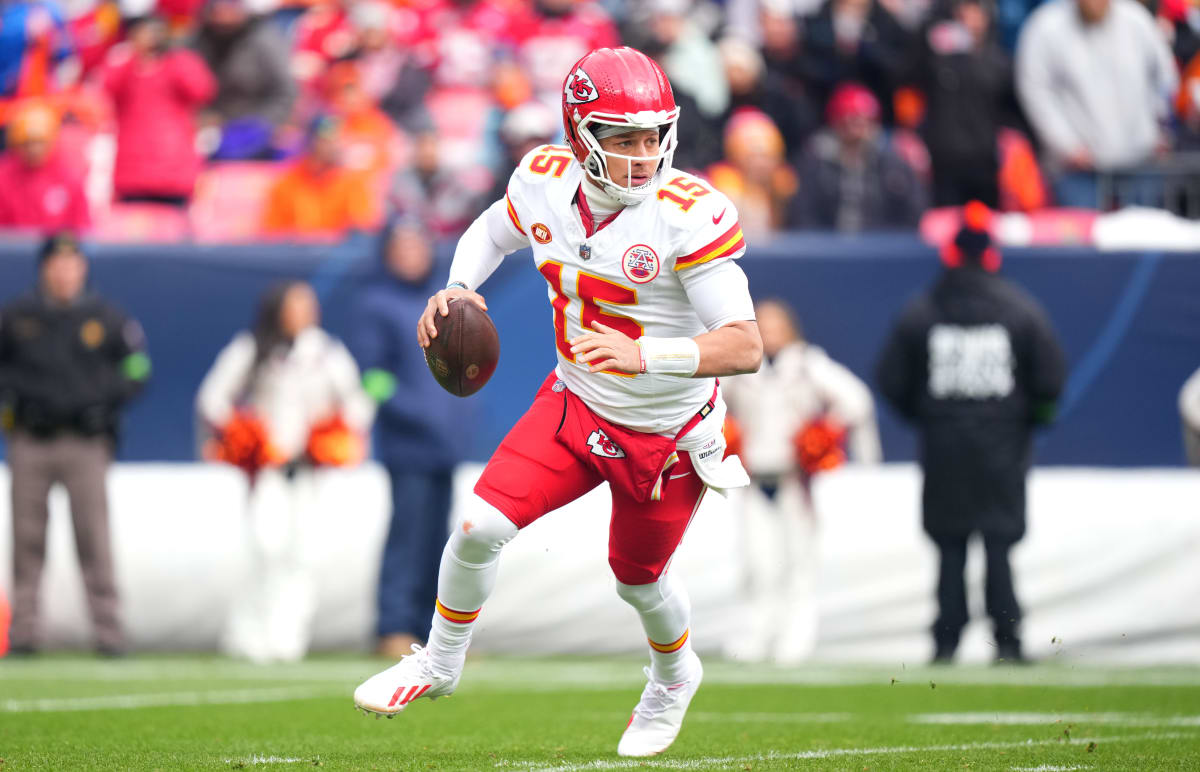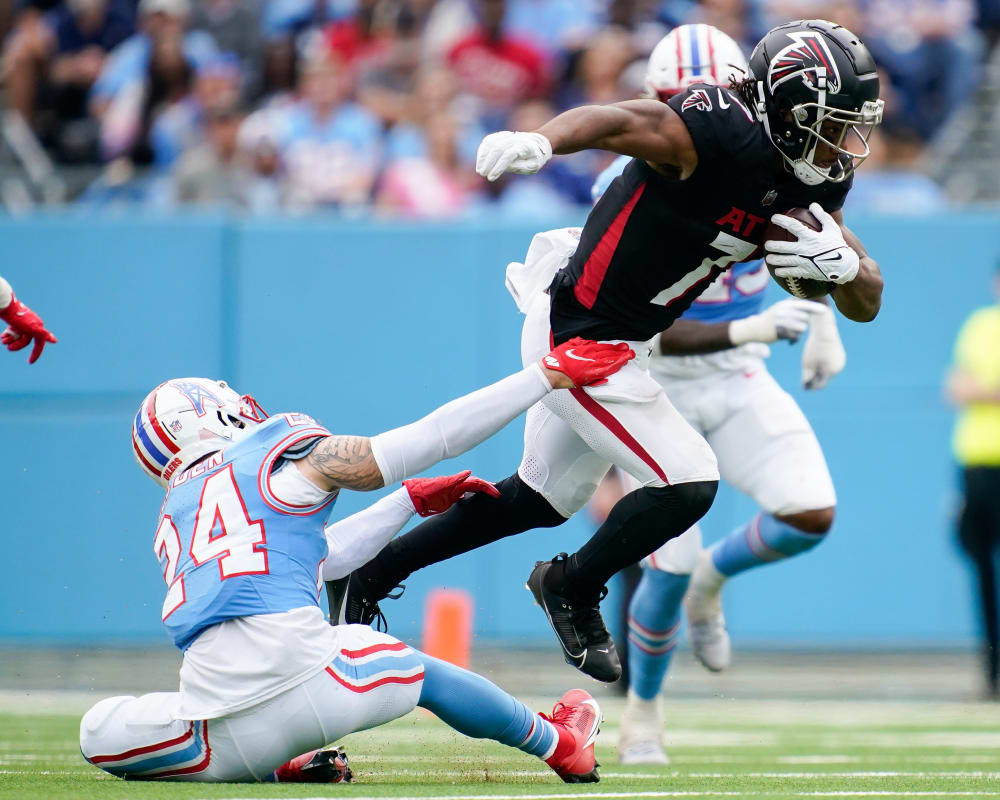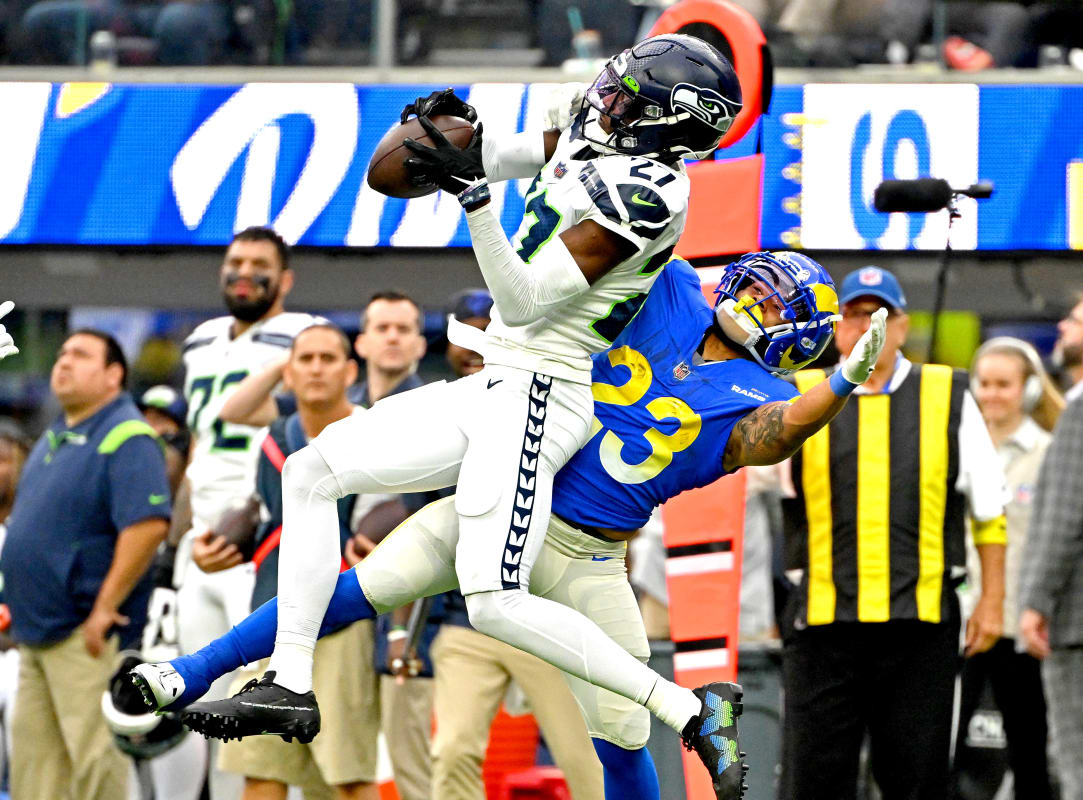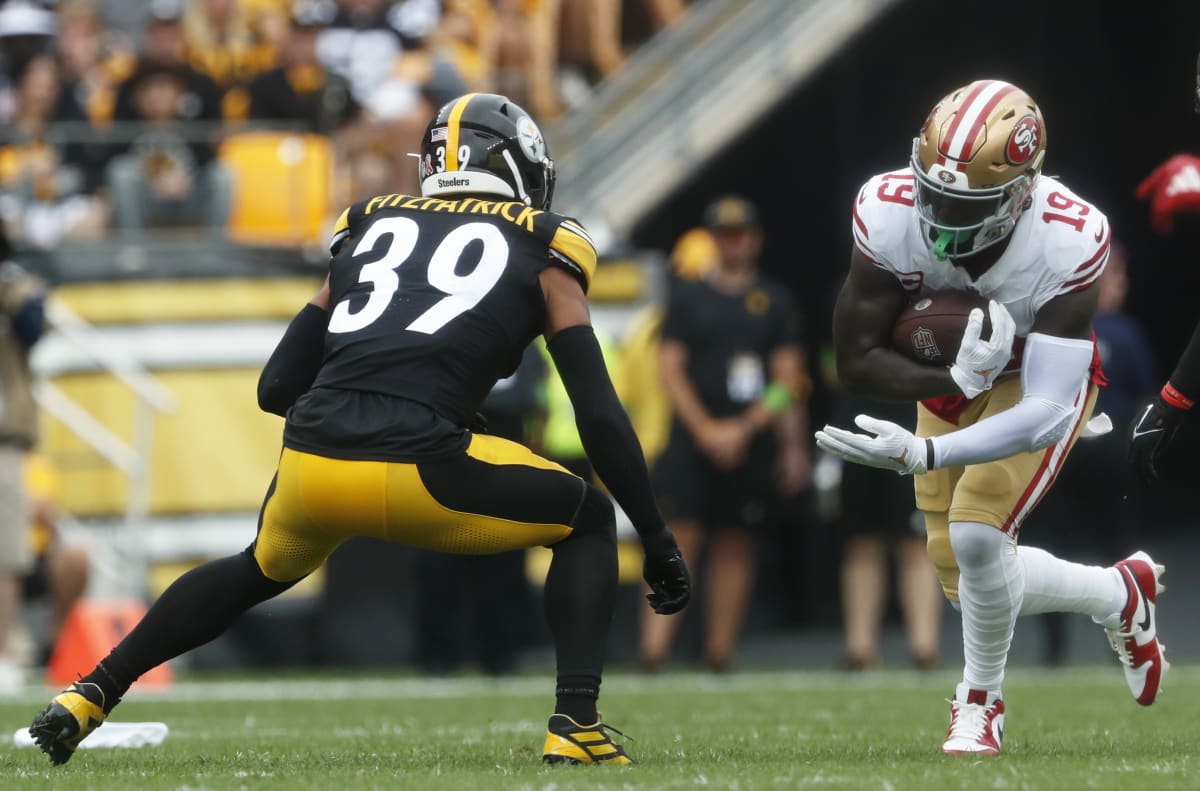After the International Olympic Committee announced that flag football would be one of the five sports added to the 2028 Summer Games, it didn’t take long for NFL players to float the idea of creating their own dream team. Star Cowboys edge rusher Micah Parsons proudly declared he would play for Team USA, and Dolphins wideout Tyreek Hill and Broncos corner Patrick Surtain II indicated their willingness to form a superteam.
What would an NFL-studded flag football roster look like in 2028? First, a quick primer. In the format under the International Federation of American Football, which will be adopted for the Olympics, teams feature 12-player rosters, and games are played five-on-five. There are no offensive or defensive lines, and quarterbacks can’t rush past the line of scrimmage with the ball unless they receive a handoff. Offenses generally feature a quarterback, a center who snaps the ball and then becomes a receiver, and three wide receiver/running back types, while defenses feature a rusher, two cornerbacks and two safeties.
Additionally, Team USA’s current flag team is no joke: Both the men’s and women’s teams won gold at the IFAF Americas Continental Flag Football Championship in July.
Speed and agility are two of the most crucial traits a flag football player can have, and Team USA’s potential roster should reflect that. To build the ultimate team, potential Olympians were selected based on top-tier athletic traits, high-end skills at their position and age, as all players will be four-plus years older when the L.A. Games begin.
Offense
Quarterback: Patrick Mahomes
Ron Chenoy/USA TODAY Sports
No quarterback is better suited to translate their skills to the flag football field. Mahomes has a penchant for throwing NFL Street–esque gamebreaker passes and designing trick plays built on misdirection and craftiness. He can make any throw, and don’t sell his athleticism short, either. Mahomes has the 24th fastest shuttle drill (4.08 seconds) and the 40th fastest three-cone time (6.88 seconds) among all quarterbacks at the combine since 2000. As quarterbacks can’t scramble in the same way they can in the NFL, Mahomes beats out a more capable rusher such as Lamar Jackson or Jalen Hurts.
Wide receiver: Justin JeffersonIn professional football and flag football, creating separation before the ball arrives helps receivers avoid tackles and keeps defensive backs off their tails. No one can do that like Jefferson, who was one of three receivers to post a PFF grade above 86.2 against man and zone coverage in 2022. He also tallied at least a 75% success rate on every route, according to Matt Harmon’s Reception Perception.
Jefferson’s ability to deceive defenders with a flip of his hips, accelerate out of his breaks and make spectacular catches is unparalleled. He might not have the pure speed of Tyreek Hill or the overall athleticism of Ja’Marr Chase, but he will dominate on any football field he touches.
Wide receiver: Tyreek HillHill will be 34 years old when the L.A. Games kick off in 2028, but maybe his speed will degenerate slower than most. There is some precedent. Team USA’s Allyson Felix won bronze in the 400 meters—becoming the oldest woman at 35 to win a track and field medal—and Sarah the Cheetah, Hill’s nickname, of course, ran a world record 5.95 100 meter sprint at 11 years old. (Cheetahs can live around 14 to 17 years in captivity.)
Kidding aside, Hill has three of the top eight fastest times recorded by a ballcarrier this year, and Miami’s offense is constructed around his speed. Off the field, he already has his own namesake flag football league in South Florida and has talked up how cool it would be to assemble a superteam for the Olympics. He would be a nightmare to cover if that does ever happen.
Running back: Bijan Robinson
Andrew Nelles/The Tennessean/USA TODAY Network
Have you seen Robinson run with the football? The Falcons’ rookie has diced would-be tacklers with razor-sharp cuts and juked defenders out of the frame, often evading them as they try to grab a hold of his waist. Robinson’s testing numbers at the combine were off the charts, too. His 9.85 relative athletic score—a metric that boils down a prospect’s size, speed, strength, explosiveness and agility into one number—ranked 28th out of 1,745 running backs since 1987. Good luck yanking his flag in the open field.
Center: Kyle PittsIn flag football, the center snaps the ball and then immediately becomes an eligible receiver. For simplicity’s sake, assume a tight end will fill this position and become an acceptable snapper before the 2028 Summer Games begin. The choice is even easier than it appears: Pitts started his football career by playing flag football when he was 6 or 7 years old. He also recorded the sixth- and ninth-best marks in the 40-yard dash and broad jump among tight ends in the past 23 years.
And, like his Atlanta teammate, Pitts doesn’t have a problem with making one-handed grabs. Travis Kelce will be 38 years old, and George Kittle will be 34 at the start of the L.A. Olympics, making Pitts the next best dynamic receiving option for Team USA.
Reserve: Kadarius Toney (wide receiver/running back)Why does Toney find himself on a list with superstars and future Hall of Famers? Consider Rafer Alston. The 11-year NBA veteran gained fame on the AND1 Mixtape Tour as Skip 2 My Lou, confounding his defenders with mesmerizing spin moves, crossovers and hesi releases. The NBA reined in his flashiness, and Alston averaged 10.1 points and 4.8 assists per game during his career. He was never an All-Star.
Starting to make sense? Toney can lay claim to being the new Human Joystick in Kansas City. He can stop on a dime, bait his defender with a shoulder fake and jerk away like few other players can. He might struggle as a consistent route runner, but that shouldn’t really matter against a helpless defender from [insert country here] trying to cover him.
Honorable Mentions: Lamar Jackson, Ja’Marr Chase, Deebo Samuel, DK Metcalf, De’Von Achane.
Defense
Defensive back: Riq Woolen
Jayne Kamin-Oncea/USA TODAY Sports
Without a defensive line to brick-wall a halfback, cornerbacks have to both stop the run and guard against the pass. The second-year Seahawks corner is built to do both. At 6'4", 205 pounds, Woolen ran a blazing 4.26 40-yard dash at the combine—the second fastest by a corner since 2000—and hit 22.25 mph against the Giants in Week 4. He led the NFL in interceptions (six) and tied for 10th in forced incompletions (13) in ’22 on the way to a 74.2 PFF coverage grade, all while frequently playing press coverage. While Woolen hasn’t been a world-beater in the run game, count on his speed or four more years of development to make up for it.
Defensive back: Sauce GardnerIf NFL wide receivers can’t win against Gardner, don’t expect the world’s flag football Olympians to have much better luck. As a rookie, he had the best single-season PFF coverage grade (90.2) of any full-time outside cornerback in the past 17 years. Like Woolen, Gardner hasn’t thrived against the run, but his shutdown corner status should earn him a spot on the Olympic roster.
Rusher: Micah ParsonsRushers must be seven yards away from the quarterback before they blitz, but all bets are off once the ball is snapped. There’s no traditional blocking in flag football, turning Parsons into the ultimate havoc agent and game-wrecker in a five-on-five environment. Parsons’s 4.39 40-yard dash is tied for the third-fastest time among all linebackers since 2000, and he’s been clocked at nearly 21 mph in an NFL game. There’s little hope for escaping his closing speed in the open field.
Safety: Minkah Fitzpatrick
Charles LeClaire/USA TODAY Sports
Fitzpatrick, now 30 years old, would be the oldest member of this defense, and he isn’t as athletic as the other players, but the group could use another bona fide tackler and pursuer. Fitzpatrick is exactly that. He had the most tackles by a Steelers defensive back (124) in 2021 and had 96 last season. Additionally, Fitzpatrick has been a solid open-field tackler, and he was one of two safeties to have a grade of at least 82.0 in run defense and in coverage in ’22. Even though his combine numbers don’t pop off the charts, an 86th percentile relative athletic score is nothing to sneeze at.
Safety: Andre CiscoThe Jaguars’ safety reportedly ran a 4.33 40-yard dash and a 4.1 shuttle before tearing his ACL in 2020 and, speaking of Parsons, raced the Cowboys’ edge rusher to a near-tie in a footrace in ’22. He has showcased legitimate ball-hawk tendencies while putting together a Pro Bowl–worthy season in Jacksonville, and only two players have more than his three interceptions. Cisco isn’t a household name yet, but he could be in the next four years.
Reserve: Patrick Surtain II (defensive back/wide receiver)Surtain said he would “definitely” want to be part of Team USA’s flag football team, but with one caveat: He has to play offense. We’ll honor his wish by getting him onto the team as a reserve. To his credit, Surtain’s 39" vertical leap was higher than numbers posted by A.J. Brown, Terry McLaurin and Jefferson, and he has flashed his catching ability on several interceptions.
Honorable mentions: Derwin James, Nick Bosa, Devon Witherspoon, Dax Hill, Talanoa Hufanga.







